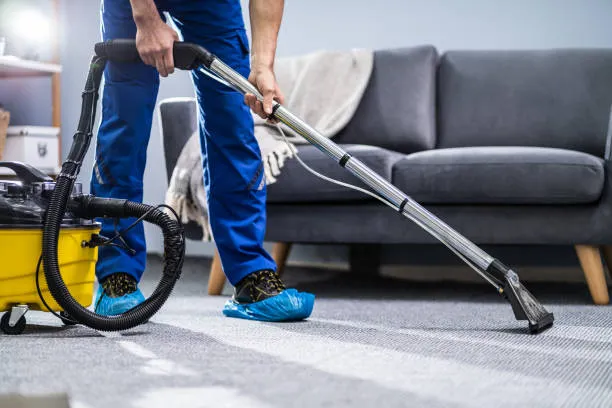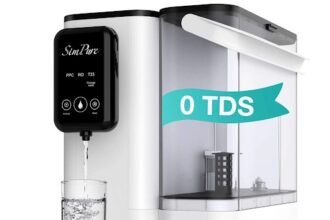Carpets do more than just soften your steps—they provide warmth, style, and comfort to your home or office. Yet, despite being one of the most used surfaces in any building, carpets are often overlooked when it comes to routine maintenance. Most people vacuum regularly, assuming that it’s enough. But the truth is, carpets can hold dirt, allergens, and bacteria deep within their fibers, invisible to the naked eye.
This is where carpet cleaning plays a vital role. Whether you’re a homeowner looking to maintain a fresh living environment or a business ensuring a clean space for employees and clients, professional carpet care is more than a cosmetic luxury—it’s a necessity for hygiene, air quality, and the longevity of your flooring investment.
Why Clean Carpets Matter
Many people underestimate how much a carpet can affect indoor air quality and overall cleanliness. Over time, carpets act like filters, trapping dust, pet dander, mold spores, food particles, and other allergens. While this can initially improve air quality, a carpet that’s never cleaned can become saturated, eventually releasing these particles back into the environment.
Key Benefits of Carpet Cleaning:
- Improved Air Quality – Deep cleaning removes contaminants that contribute to respiratory issues, especially for people with asthma or allergies.
- Longer Carpet Lifespan – Regular cleaning reduces fiber wear and extends the life of the carpet by removing abrasive debris.
- Better Appearance and Feel – Clean carpets look brighter, feel softer, and eliminate unpleasant odors.
- Healthier Living Space – Carpet cleaning eliminates harmful bacteria, fungi, and mites that can thrive in dirty fibers.
- Pest Prevention – Soiled carpets can attract pests like carpet beetles and fleas, especially in homes with pets.
What’s Really in Your Carpet?
Even if your carpet looks clean on the surface, it could be harboring a multitude of unseen contaminants. Common substances found in neglected carpets include:
- Dust mites and their waste
- Dead skin cells
- Pet hair and dander
- Mold spores
- Pollutants from outside (like pollen, vehicle exhaust)
- Bacteria and viruses
- Food and drink residues
Routine vacuuming can only reach the surface layer, leaving deeper grime untouched. That’s why periodic carpet cleaning by professionals is recommended for truly effective results.
Methods of Carpet Cleaning
There are several methods used to clean carpets, each suited to different types of fibers, soiling conditions, and customer needs. Let’s break down the most common techniques:
1. Hot Water Extraction (Steam Cleaning)
This method uses high-pressure hot water to agitate the carpet fibers and dissolve dirt. A cleaning solution is applied, and then the dirt is extracted using a powerful vacuum.
Pros:
- Deeply cleans and sanitizes
- Removes stains and odors
- Suitable for allergy sufferers
Cons:
- Longer drying time
- Requires professional equipment
2. Dry Cleaning (Compound Cleaning)
A cleaning compound is spread over the carpet, agitated with a brush, and then vacuumed. It requires little to no water.
Pros:
- Quick drying time
- Minimal moisture—ideal for water-sensitive carpets
Cons:
- May not clean as deeply as steam cleaning
3. Bonnet Cleaning
This method involves applying a cleaning solution and using a rotary machine with an absorbent pad (bonnet) to clean the surface.
Pros:
- Fast and efficient for surface cleaning
- Great for commercial use
Cons:
- Only cleans the top layer
- Can leave residue over time
4. Shampooing
Foam-based shampoo is scrubbed into the carpet, and once dried, it is vacuumed out.
Pros:
- Good for heavy soiling
Cons:
- Can leave sticky residue
- Requires thorough rinsing
Choosing the right method depends on the carpet material, the level of soiling, and the specific cleaning goals. For instance, commercial buildings with high foot traffic may benefit from bonnet or dry cleaning, while households with pets and children often opt for deep steam cleaning.
Frequency of Carpet Cleaning
How often should you clean your carpets? The answer depends on several factors including usage, presence of pets, allergies, and foot traffic.
General Recommendations:
- Every 6–12 months for households with average use
- Every 3–6 months for homes with children or pets
- Every 2–3 months for allergy sufferers
- Annually at minimum for light-traffic areas or unused rooms
Regular professional carpet cleaning not only helps maintain the look and feel of your carpet but also contributes to a healthier living environment.
DIY vs. Professional Carpet Cleaning
Many homeowners consider renting or buying carpet cleaning machines to save money. While this can be effective for minor refreshes, there are significant differences between DIY and professional services.
DIY Cleaning:
- More affordable short-term
- Convenient for light touch-ups
- May not remove deep stains or allergens effectively
Professional Cleaning:
- Uses industrial-grade equipment
- Technicians are trained to treat specific stains and materials
- Includes specialized treatments (deodorizing, anti-microbial solutions)
- Saves time and produces long-lasting results
In most cases, professional services yield far superior results, especially when dealing with deep-set stains, heavy traffic areas, or health-related concerns.
Carpet Cleaning and Stain Management
Not all stains are created equal. Here’s how professionals typically approach different types of stains:
- Pet Accidents – Enzyme-based cleaners break down organic materials and remove odor at the source.
- Wine and Coffee – Acidic stains are treated with pH-balanced solutions to prevent setting.
- Grease and Oil – Solvent-based cleaners emulsify fats without damaging fibers.
- Ink or Paint – Require specialized stain removers and rapid treatment to avoid permanent staining.
Trying to remove tough stains yourself can sometimes worsen the problem. Calling in experts ensures the safest and most effective treatment for your carpet.
Eco-Friendly Carpet Cleaning Options
As environmental awareness grows, many companies now offer green cleaning services. These use:
- Non-toxic, biodegradable detergents
- Low-moisture systems to reduce water waste
- HEPA-filtered equipment to improve air quality
- Sustainable practices from transport to disposal
Eco-friendly carpet cleaning is ideal for homes with children, pets, or individuals sensitive to chemicals.
Tips for Maintaining Clean Carpets Between Services
To keep your carpet looking fresh between professional cleanings:
- Vacuum regularly, especially in high-traffic areas
- Remove shoes indoors to prevent dirt transfer
- Treat spills immediately using blotting—not rubbing
- Use rugs or runners in heavy-use zones
- Groom carpet fibers occasionally to reduce matting
These simple habits can dramatically extend the time between deep cleanings and preserve the carpet’s appearance.
The Cost of Carpet Cleaning
Carpet cleaning costs can vary based on:
- Square footage
- Type of service (steam, dry, eco-friendly, etc.)
- Level of soiling
- Special treatments (stain removal, odor neutralization)
- Residential vs. commercial
On average, professional services may range from $25 to $75 per room, or $0.25 to $0.50 per square foot. Always request quotes from reputable providers and ensure that services are clearly outlined.
Choosing the Right Carpet Cleaning Service
When selecting a provider, consider the following:
- Certifications – Look for technicians certified by organizations like the IICRC (Institute of Inspection Cleaning and Restoration Certification).
- Experience – Years in the business and proven results speak volumes.
- Customer Reviews – Read online reviews and testimonials.
- Insurance – Ensure the company is insured in case of damage.
- Satisfaction Guarantee – Reputable companies stand by their work.
Taking the time to vet your service provider ensures better outcomes and peace of mind.
Final Thoughts
Carpets are a significant investment that deserve proper care and maintenance. Beyond appearances, clean carpets contribute to better health, comfort, and air quality in your home or workspace. By investing in routine carpet cleaning, you’re not only preserving your flooring—you’re creating a cleaner, healthier environment for everyone who steps through the door.
Whether you’re preparing for guests, responding to seasonal allergies, or just want your living space to feel refreshed, a deep carpet cleaning can make all the difference.














